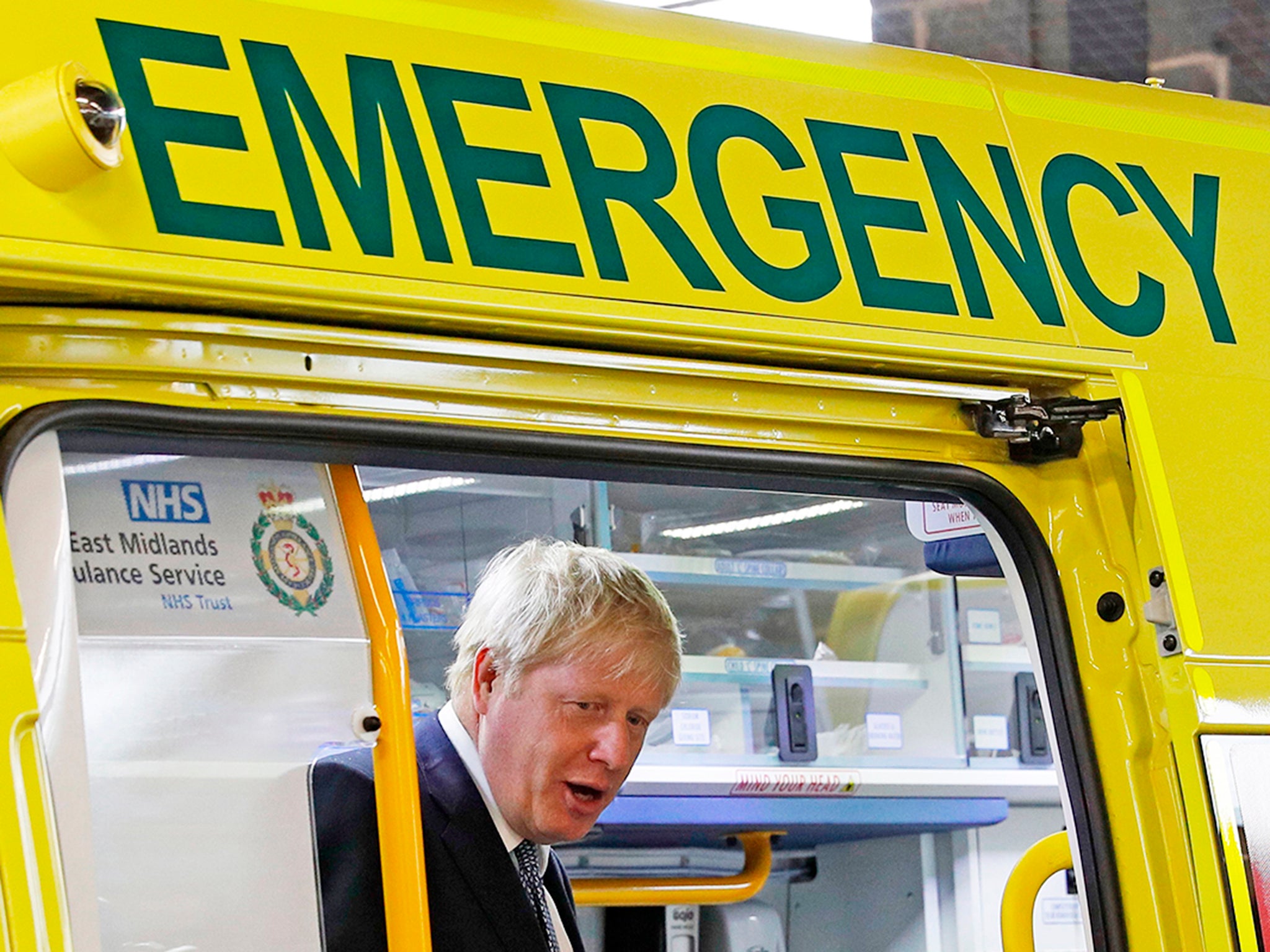Record number of A&E patients waiting more than four hours to be seen, NHS figures show
Prime minister has ‘mountain to climb’ to reduce waiting times as promised, health experts say
Your support helps us to tell the story
From reproductive rights to climate change to Big Tech, The Independent is on the ground when the story is developing. Whether it's investigating the financials of Elon Musk's pro-Trump PAC or producing our latest documentary, 'The A Word', which shines a light on the American women fighting for reproductive rights, we know how important it is to parse out the facts from the messaging.
At such a critical moment in US history, we need reporters on the ground. Your donation allows us to keep sending journalists to speak to both sides of the story.
The Independent is trusted by Americans across the entire political spectrum. And unlike many other quality news outlets, we choose not to lock Americans out of our reporting and analysis with paywalls. We believe quality journalism should be available to everyone, paid for by those who can afford it.
Your support makes all the difference.A record number of accident and emergency (A&E) patients waited for more than four hours to be seen last month, according to new NHS figures for England.
As experts warned the health service was “struggling to cope”, performance statistics revealed 275,526 patients were seen after the targetted time last month compared with 208,083 in July 2018, an increase of almost a third (32.4 per cent).
From decision to admit to admission, 57,694 were seen after four hours – a rise of 34.7 per cent from the same month last year.
This is also the highest number for July since current records began in August 2010.
Of these, 436 patients waited more than 12 hours – 192.6 per cent higher than July 2018.
The figures also show overall admissions at emergency departments have also hit records levels – rising 6 per cent in a year to reach 2.27 million last month.
A record number of people are also waiting for routine operations in England and around 4.4 million people were waiting to start treatment in June – a 5 per cent rise from the previous year.
The figures were revealed less than 24 hours after Boris Johnson pledged to invest £250m in artificial intelligence, which he claimed would transform care and cut waiting times and work on digital advances to improve the detection of diseases by predicting who is most likely to get them.
Earlier this week he also promised £1.8bn towards the maintenance and rebuilding of hospitals and pledged to change a pension tax hitting the best-paid doctors and nurses that has resulted in their cutting back on extra shifts.
Shortly before she left office his predecessor Theresa May also promised the NHS would get an extra £20bn a year by 2023 as a 70th “birthday present”. This meant the £114bn budget would rise by an average of 3.4 per cent annually.
After the latest figures were revealed, however, Jonathan Ashworth, the shadow health secretary, said the figures confirmed recently unearthed comments from Boris Johnson’s senior adviser Dominic Cummings that Conservative party MPs “don’t care about the NHS”.
He added: “The Tories are failing to meet target after target. Hospitals are bursting, the NHS struggles with chronic staff shortages of 100,000 and it is putting patients at risk.”
Nigel Edwards, chief executive of the respected health think tank Nuffield Trust, said the number of people waiting more than four hours on trolleys to be admitted “would have once been unthinkable, even in the depths of winter”.
He said: “The soaring temperatures in July have taken their toll on patients and staff, with a record number of people turning up to A&E last month.”

Of patients waiting to start planned treatment at the end of June, the statistics also revealed that 86.3 per cent had been on the waiting list for more than 18 weeks, below the 92 per cent target.
For people with suspected cancer, 2.3 million were seen in the 12 months to June 2019, an increase of 13.7 per cent.
But the NHS missed its target of 93 per cent of people with suspected cancer being seen by a specialist within two weeks of an urgent referral by their GP.
HCSA president Dr Claudia Paoloni said the effects of pension tax changes had “undoubtedly” impacted on care, warning that waiting lists could hit five million people without reform.
Tim Gardner, senior policy fellow at the Health Foundation charity, said: “The new prime minister has identified reducing NHS waiting times as one of his key priorities, but today’s statistics show there is a mountain to climb. Hospitals are struggling to cope with the demand of emergency admissions which have continued to grow year on year, while people are waiting longer for planned surgery.”
“If not adequately addressed, these ongoing pressures will increasingly impact on patients and the level of care that the health service can deliver. And it’s not just about A&E – sadly these figures show relentless pressure throughout the whole system.”
An NHS spokesman said: “A&E doctors, nurses, paramedics and other staff have pulled out all the stops to deal with the record heat and record number of attendees over July, treating the highest number of patients ever within four hours – and on average 2,300 more people a day within four hours than in June.”
Additional reporting by Press Association

Join our commenting forum
Join thought-provoking conversations, follow other Independent readers and see their replies
Comments